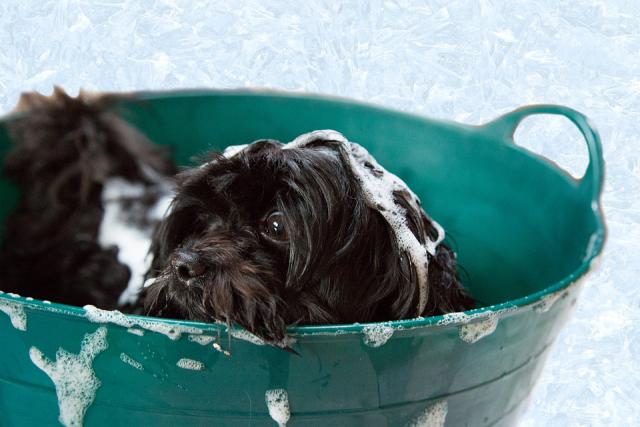They’re dangerous than you think. Out of all the pests, these cause maximum discomfort due to their frequency, rapid growth and inevitable invasion. If you’ve got a dog, spring comes with hundreds of dog ticks and fleas.
We’ve seen people resorting to insane measures like treating the pets with human pest repellents or ignoring this issue altogether. What do you think? Is it only your dog that’s at risk? They can act as carriers of harmful human diseases, cause you infections and even result in death.
Now that you know how dealing with dog ticks is essential both for the pets and human beings in the family, let’s talk about what we can fight these. Here are some preventive measures. Keep reading to find the most effective curative measures.
Preventive measures
1. Vacuum your house
It makes more difference than you think. Clean the corners. Chuck out the garbage. Pests thrive in the dirty environment. Don’t give them any.
2. Mow your lawn
Keep your grass blades short. Ticks often use grass blades as their waiting stations. The moment they come in contact with your pet’s body, they stick to them and do justice to their natural behaviour of being a parasite. They suck your pet’s blood, making it sick and very uncomfortable. Take good care of your lawn if you’re going to let your dog play with it.

3. Use some household sprays to kill fleas
These are readily available at the vet. Get some bottles and spray inside your house. Read the label carefully for safety instructions. Spring or summer is also a very good time for calling for pest control service. It would work great if you deal with other pests like ants and cockroaches as well.
4. Flea traps
For fleas, you can always trust flea traps. They work well and can be trusted as insects are easily attracted to warmth and light, probably why you see them more around spring and summer.
You can also consider keeping your dogs indoors, but we find it very unacceptable to restrict your pet from the outdoor exercise it requires. So, we wouldn’t suggest that as a preventive measure.
The only problem is that ticks stay. They multiply rapidly and are a pain to get rid of. If you’ve been following the above preventive measures and still face an infestation, here are some curative measures along with some personal advice from our team, many of which are proud and responsible dog owners.
Dealing with dog ticks and fleas
Before we talk about the medications, let us warn you that you need to act quickly. Never underestimate these minute creatures. One female tick can produce hundreds of offsprings leading to a severe infestation in your house. When we say serious, it means you would have ticks all over your carpets, sheets, kitchen shelves, pet and the humans (you and your family). It becomes a matter of concern because of the cleanliness purpose as well as because ticks are harmful even to humans. No, they don’t hate human blood. In fact, some of them love it. Don’t believe us? Do your research and then come back for these tips.
1. Spot-on medication:
It’s one of the best methods to treat dog ticks and fleas. The medication spreads through a dog’s body through translocation and gives instant relief. We advise you to go for it when you see a high infestation and want immediate relief. It will also help your pet stay safe for a few weeks (it varies with one’s surroundings and climate).
2. Shampoos:
Dog shampoos to treat ticks and fleas work well. Just use them regularly. Bathe your dog every two weeks. This is a good option as long as you’re not facing high infestation. It won’t work if your dog loves to spend time playing in your lawn.

3. Flea dips:
These are chemicals which can be applied to your dog’s fur. Very effective but very dangerous. You would have to be very careful during application. They work well.
4. Oral medication:
If your dog doesn’t create a fuss while taking tablets, this is a good choice. We are considering that your pet gets regular deworming doses. It’s important too.
Which is the most effective curative method?
Spot-on medication. We have tried all these strategies, and we believe that spot-on medication is the best. But it can’t be done that often so we attempt to treat our pets with either shampoos or oral medication. We haven’t had to use spot-on treatment more than once per season due to this. We use flea dips only in case the pet gets sick, and it becomes unsuitable to be treated with spot-on medication.

